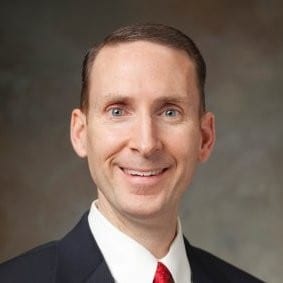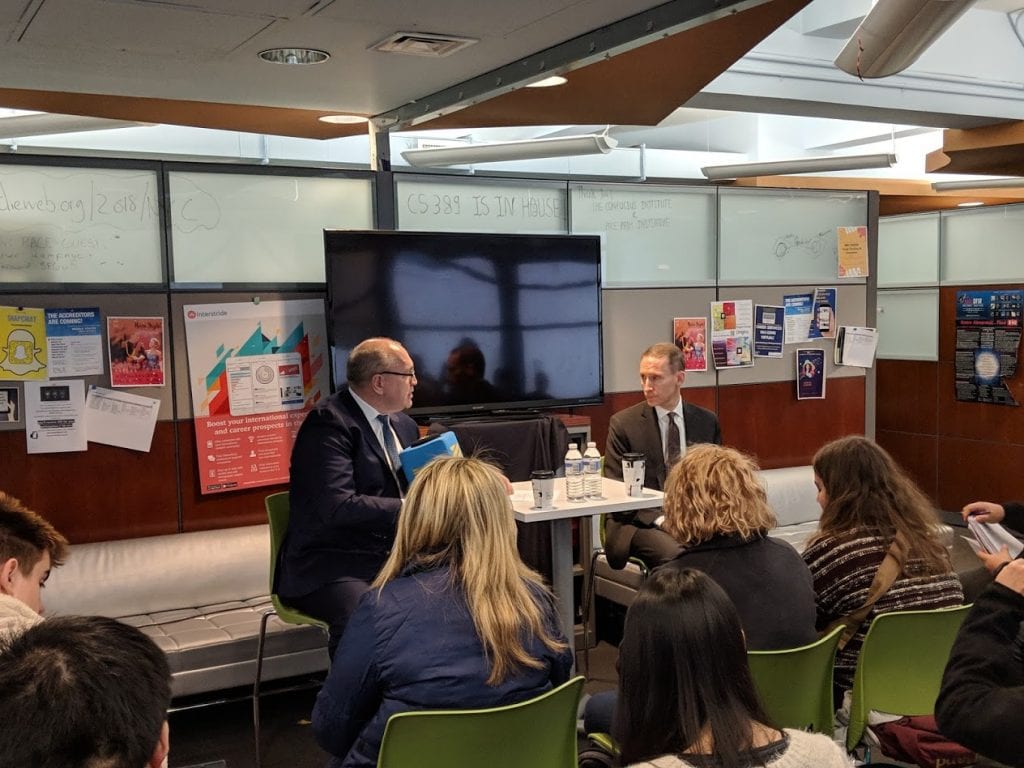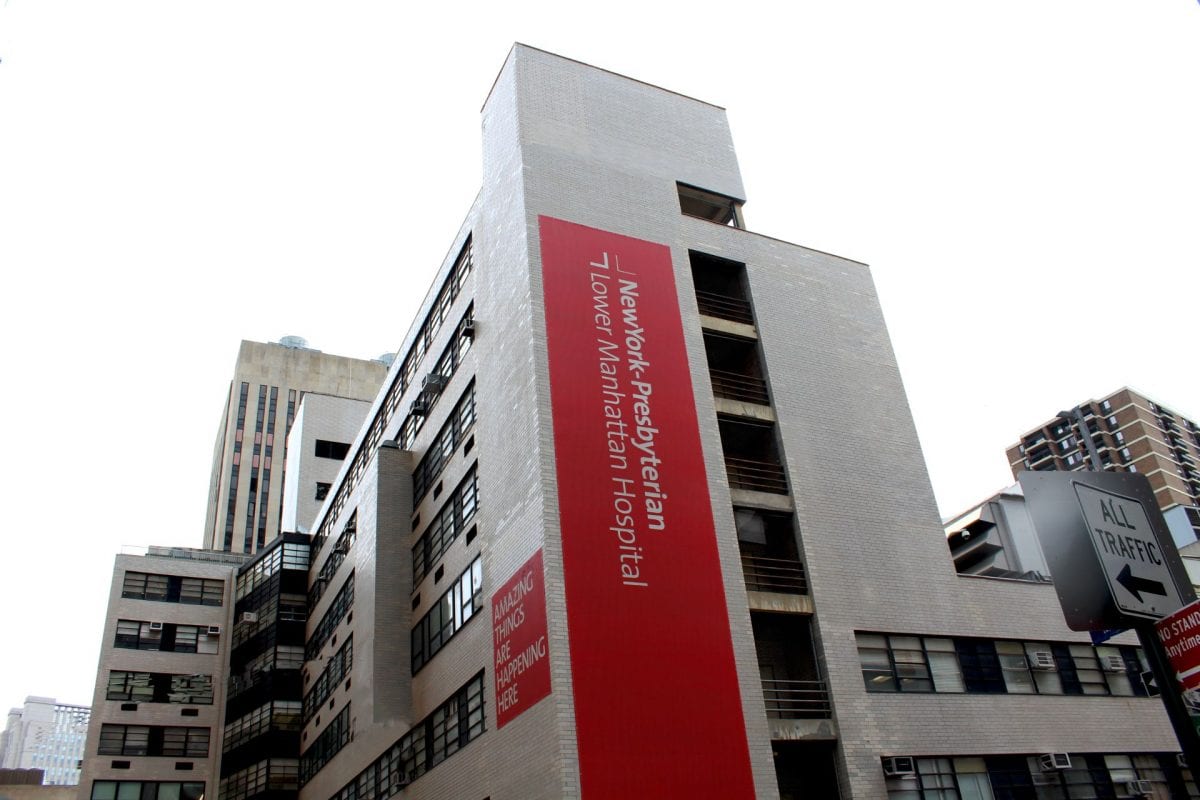NewYork-Presbyterian Hospital stands tall and proud next to the Pace University New York City campus. The building is located just across from 1 Pace Plaza, offering healthcare to a vast number of patients each day who are seeking the best services that the city has to offer. It is because of NewYork-Presbyterian’s unique focus on rendering services using artificial intelligence (AI) and telemedicine technologies that the Seidenberg School is presenting the Innovation in Information Technology (IT) award to NewYork-Presbyterian at April 24th’s Seidenberg Innovation Awards.
The award is being presented to the entire IT team at NewYork-Presbyterian, a team which has driven many exciting initiatives that use pioneering technologies to provide the hospital’s patients – and its medical and administrative staff – with excellent and effective service. These initiatives have been driven in large part through the leadership of Chief Information Officer, Daniel J. Barchi.

Many of us at the Seidenberg School of Computer Science and Information Systems at Pace University first met Daniel when he visited campus in the fall semester of 2018. He was here to participate in the Tech Leadership Series, a run of guest speaker events that bring high-level industry workers to campus to share their stories, tips for success, and to inspire students to achieve. During that event, Daniel shared stories of hacking scares, the fascinating applications of AI in healthcare, data privacy, work ethic and leadership, and more – so when the opportunity to get to know him better in interview came up, we jumped at the chance to share more of his story.
Daniel has had a very interesting career, in which many of his experiences are what he attributes his success to. Before he became CIO of NewYork-Presbyterian, his life as a naval officer was his primary identity. After graduating from the United States Naval Academy in 1991, he spent six years serving at sea and was awarded the Navy Commendation Medal for Leadership. After deciding to leave the Navy for a new opportunity, he grew as a project manager within the telecom industry.
Daniel’s new job within the telecom industry “was full of many global challenges, and that experience of solving problems around the world led me to work for a health system and run a biomedical institute which needed to be improved.”
After running Carilion BioPhile Biomedical Institute as CEO and then President for several years, Daniel was invited to step into the role of Chief Information Officer – “and I’ve been doing healthcare IT ever since,” he says.
Once Daniel entered the world of healthcare IT, it was clear he’d found his niche.
“I think the amazing thing about healthcare IT is that people with technical and process skills can help impact patients’ lives,” Daniel says. “Without being physicians or nurses ourselves, our work is deeply critical to the outcome of patients. We develop and implement and maintain the systems that provide clinicians with the right tools they need to take care of patients, and the . . . analytics that they need to make decisions.”
While the tools that NewYork-Presbyterian IT specialists create and implement build a stronger service for patients, it’s the IT team itself that really stands out. According to Daniel, healthcare IT is “80% people, 15% process, and only 5% technology.” That means that alongside having smart and innovative individuals on staff, it’s also important to have open and attentive communication across all departments.
“The way we make this work best . . . is to listen to what the clinicians need and make sure the systems are working for them,” he states.
An example of these systems is one that is providing more accessible healthcare to all patients: kiosks. NewYork-Presbyterian has placed kiosks in Walgreens stores as part of their NYP On-Demand strategy. Patients can use these kiosks to get direct access to a physician on call. Daniel believes this is a fundamental part of NewYork-Presbyterian’s service.
“We have world-class physicians . . . but not everybody has immediate access to those physicians either from a time or geography perspective. We wanted to make sure that we could reach many more patients when and where they are via virtual medicine.”
Another example of the hospital’s drive to use technology to provide better service is its ‘mobile stroke ambulances’. If a 911 call is placed where the patient is displaying symptoms of a stroke, a radio ambulance (an ambulance that interrupts nearby car radios with information about whether the ambulance is responding to an emergency and which direction it is traveling, intended to assist drivers in moving out of the way as it passes) and one of the stroke ambulances are immediately dispatched to their location. “Right there on the side of the road, we take a CT of the patient’s head and beam the information back to a neurologist who can . . . start the treatment right there,” Daniel explains. This service speeds up the treatment process up as much as 45 minutes which can save critical brain cells. The ambulances don’t just save lives—they prevent life-threatening situations in the first place.
“Not only are we leveraging technology for the good of that one patient . . . we use telemedicine to allow one neurologist to provide care to all three, remotely,” Daniel says. NewYork-Presbyterian operates the largest fleet in the United States, including three mobile stroke ambulances.
These strategies and innovations are the reason why NewYork-Presbyterian is so notable for its patient care system.
Adopting technology into healthcare creates widespread care at a smaller cost.
“We are rapidly adopting artificial intelligence as a way to improve operations and the care of our patients. Quality is delivering outstanding care at a good value, and we’d like to reduce the cost of delivering care,” Daniel says, going on to emphasize that the introduction of AI technologies was pulled from the vision of the organization’s CEO, Dr. Steve Corwin.
“Several years ago, he encouraged us to invest in telemedicine and advanced technology as a way to continue to grow the quality of care that we deliver, but also to reach a broader population.
“NewYork-Presbyterian serves more underserved New Yorkers than just about any other health system, and we wanted to make sure that we could meet the needs of everybody, not only the patients who come to one of our hospitals.
“We started implementing artificial intelligence in the back office, rolling it out on timekeeping, [invoicing], follow-up, and other financial areas as a way to make the work that we do more efficient.”
That efficiency has grown over time.
“We’ve now started rolling it out in clinical workspaces as well: sending nudges to physicians, letting them know when patients are due for specific tests or other things that we can do to speed up a patient’s discharge, so their length of stay in the hospital is reduced,” he states.
One thing that is clear is that NewYork-Presbyterian does not implement new technology just for the sake of doing so. Every decision leads toward achieving the goal of providing faster, better, and more efficient care to as many patients as possible.
“Telemedicine—over the past three years—with the support of NYP leadership, our trustees, and philanthropy has allowed us to invest in advanced technology as a way to provide that outstanding care.”
AI and telemedicine are the present and future of healthcare and NewYork-Presbyterian is at the forefront of utilizing those resources. During Daniel’s visit to Pace University, he discussed many of these innovations with the Seidenberg student community.
Daniel Barchi’s visit to the Seidenberg School was “fantastic.”
“I’m impressed by Pace and, particularly, the programs of the Seidenberg School. The quality of the students, the focus of the faculty and curriculum, and the idea that Pace is creating a learning environment which ties directly to the needs of New York and other institutions allows us to create this pool of advanced technologists who are ready to implement everything that they’ve learned at Pace in a real-world environment immediately.”

Daniel also took some time to discuss what this honor means to him and his team.
“I’m proud of what we’ve done, and I’m proud that we’re recognized by a great institution: Pace University, here in New York, for this advancement. I think that recognition like this is good because it encourages us to do more and it also highlights for other health systems what is possible.”
We will be honoring the achievements of Daniel’s team at the Seidenberg Innovation Awards on April 24th, where the IT group at NewYork-Presbyterian will receive the Innovation in Information Technology (IT) award.
The Seidenberg Innovation Awards (SIA) recognizes the remarkable work done by individuals and organizations in our community. Proceeds from the event will directly support our students as they progress into the “advanced technologists” Daniel described. Tickets, tables, and student sponsorships are available by clicking this link.




thank you for sharing